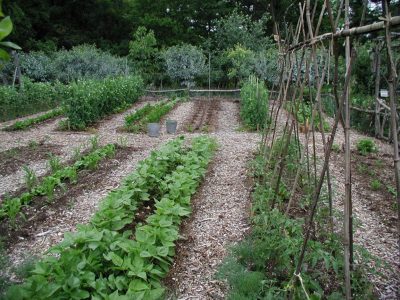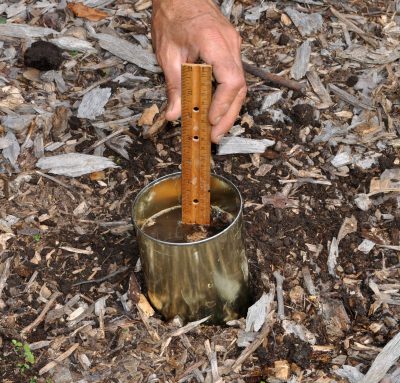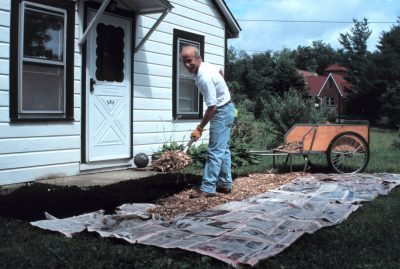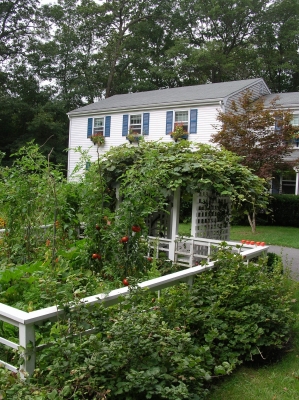VEGETABLE MATTERS
Homebound? Plant Vegetables!
Working from home, I’m used to being homebound. And I like it. Not everyone feels this way, and now COVID-19 has forced this situation on many people.
For anyone who isn’t growing some vegetables, if there ever was a time to start a vegetable garden, it’s now.

A garden will provide pleasant and interesting diversion, some exercise, a chance to be outdoors, the need for less frequent trips to the market, a good family project/activity, and some savings of food dollars. And the experience of — wonder of wonders — watching seeds sprout and grow into plants.
Growing vegetables is easy. Seeds have been practicing sprouting for millions of years. That’s what they do. Sprout. And plants have been doing likewise.
Paying attention to some basic plant needs will make your garden even more successful. As far as soil, don’t worry about fertility or acidity for now. The most important consideration is drainage. That is, does water move down through the soil or does it just sit in place for a long, long time.
What’s a “long, long time?” If you really want to know, cut the bottom and top off a coffee or similar can, and set the can into a hole a few inches deep, pushing it into the soil (not if it’s frozen) in the bottom of the hole. Fill the can with water, let it drain, then fill it again. If the water level drops slower than 1” per hour, drainage is poor. Find another site or make raised beds.

No backyard or front yard in which to grow vegetables? No problem. Grow them in a tub or flowerpot. Pay attention to drainage even if your “garden” is a tub or a large flowerpot. The container must have drainage holes in its bottom to let water drain out. And you’re going to fill that container with “potting soil,” not with dirt from your garden. Water can’t drain well through garden soil in the confines of a container, which is why potting soils have, among their ingredients, perlite, vermiculite, or other mineral aggregate to speed water flow.
Whether in a container or in your front or back yard, vegetables need sun, about 6 hours of direct summer sunshine daily.
Soil Matters
Next, ready the ground. For most newbies, that means transmuting a patch of lawn to a vegetable garden. There are two options. The first is the traditional one, turning over and mixing up the top few inches of ground to kill existing vegetation and leave a surface in which you can plant seeds. Do that, using a shovel, garden fork, or rototiller as soon as the soil is dry enough to crumble, not wad up, when squeezed gently in your hand.
 Wait two weeks for Mother Nature to work her magic decomposing some of that existing vegetation. Or, rather, part of her magic. After two weeks, dig up the ground again, this time adding some compost or fertilizer. You could dispense with the compost or fertilizer this season if whatever was growing there before digging looked vibrant. Better not to go out to a store these days if you don’t have to anyway. Wait another two weeks, and when you’re ready to plant, use a garden rake to tickle the surface of the ground and crumble it.
Wait two weeks for Mother Nature to work her magic decomposing some of that existing vegetation. Or, rather, part of her magic. After two weeks, dig up the ground again, this time adding some compost or fertilizer. You could dispense with the compost or fertilizer this season if whatever was growing there before digging looked vibrant. Better not to go out to a store these days if you don’t have to anyway. Wait another two weeks, and when you’re ready to plant, use a garden rake to tickle the surface of the ground and crumble it.
Digging up the ground may be a nice way to get your blood pumping on a spring day, and may even give you a feeling of righteousness, but there’s a better, quicker, and easier way, to prepare the garden site. There’ll also be less weeds in weeks to come.
For option number two, you will need a supply of compost and either wood chips, straw, sawdust, or wood shavings. This option is easy: just cover the garden area with newspaper, four sheets thickness and overlapping, and then wet the newspaper to keep it from blowing away. Mark out 3 foot wide beds and 18 to 24” wide paths with string, and lay an inch or more of compost in the bed areas, and enough of the wood chips, straw, sawdust, or wood shavings in the paths to cover the paper. You’re all set to plant!

In most places, but not everywhere, a fence is needed to fend off rabbits. Two-foot high chickenwire (“poultry netting”) will do the trick.
(All this, and more, in my book Weedless Gardening.)
What to Grow
What to grow is a matter of taste. Kale, collards, and Swiss chard offer maximum nutrition and a very long harvest season. For some home-grown calories, potatoes and sweet corn. For rounding things out with great flavor, tomato, eggplant, pepper, cucumbers. Think about what you want to grow, look at seed catalogues, order seeds, and when we next cross paths, I’ll say something about timing.
Inspiration and Humor for the Pandemic
In these times of pandemic, the insouciance of animals and the humor they offer (and washing hands, social distancing, and covering up coughs and sneezes) is welcome. Here is a short video clip of my ducks:
Duck video



